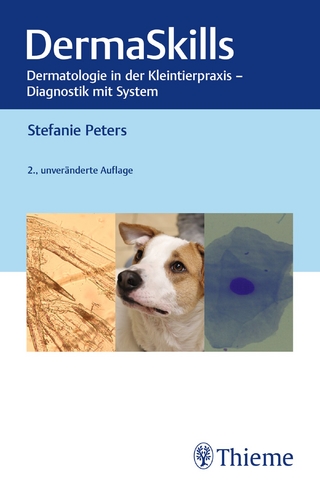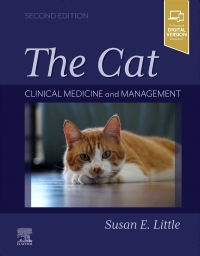
Trauma Management in the Dog and Cat
W B Saunders Co Ltd (Verlag)
978-0-7020-2875-5 (ISBN)
- Titel wird leider nicht erscheinen
- Artikel merken
Trauma is a relatively common presenting complaint to veterinarians. All veterinarians see emergencies on a regular basis, and the increasing importance of emergency medicine and critical care in veterinary medicine calls for a book like this. Research has proven that the majority of veterinarians are dealing with trauma and injury for 25-50 per cent of their time. The types of trauma and the physiologic consequences can be wide ranging. Hence, the approach to these patients can be quite daunting for the general practitioner who does not see these types of cases on a daily basis. The authors have benefited from over 25 years of combined experience working in the busiest academic emergency room in the world.
I.Physiology and pathophysiology of trauma II.Global Approach to the Trauma Patient a.Telephone triage/first aid advice b.Triage i.History ii.Rapid Assessment of four major organ systems. 1.Recognition of most life-threatening conditions. c.Primary Survey i.Assessment of Respiratory System and Emergency Treatment. ii.Assessment of Tissue Perfusion and Emergency Treatment. iii.Assessment of the Nervous System and Emergency Treatment. iv.Assessment of the Renal System and Emergency Treatment. d.Secondary Survey i.Detailed physical examination (Nose to tail). This chapter would review the full physical examination of the whole body with emphasis on trauma related conditions. e.Monitoring i.This chapter will cover the general principles of monitoring the trauma patient. It would include monitoring of the four major organ systems and the different levels of monitoring for differing severities of physiologic compromise. III.Respiratory System In Trauma a.Clinical signs of respiratory compromise b.Physical Examination of the respiratory system in the trauma patient. i.Localization of the pulmonary lesion 1.Algorhythmic approach will be provided. c.Diagnostics for assessment of the pulmonary system i.Pulse oximetry ii.Arterial blood gas measurement iii.Thoracic radiography iv.Thoracic ultrasound v.Thoracocentesis vi.GI contrast study for diagnosis of diaphragmatic hernia vii.Intraperitoneal contrast study for diagnosis of diaphragmatic hernia. d. Methods and techniques of Oxygen supplementation i. Mask ii.Flow by iii.Tent iv.Oxygen cage v.Nasal vi.Endotracheal intubation and positive pressure ventilation e.Specific trauma related respiratory conditions i.Simple, tension and sucking Pneumothorax ii.Rib fractures 1.Flail chest iii.Pulmonary contusions iv.Hemothorax v.Diaphragmatic hernia vi.Tracheal rupture/perforation vii.Pneumomediastinum viii.Subcutaneous emphysema ix.Respiratory paralysis secondary to cervical trauma x.Penetrating chest wounds xi.Intercostal muscle tears xii.Traumatic upped airway obstruction f.Monitoring the respiratory system i.Physical parameters ii.Pulse oximetry iii.Arterial blood gas analysis IV.Cardiovascular system in trauma a.Clinical signs of cardiovascular system compromise b.Physical examination of the cardiovascular system i.Localization of the cause of the cardiovascular system abnormalities c.Diagnostic and function assessment of the cardiovascular system. i.Electrocardiogram ii.Thoracic radiographs iii.Echocardiogram iv.Blood pressure measurement v.PCV, TS, venous blood gas analysis, lactate vi.Pulmonary artery catheter and measurement of CO, SVR, Mixed venous oxygen concentration, systemic vascular resistance, etc. vii.Urine output. d.Methods and techniques of cardiovascular resuscitation i.Intravenous access ii.Intravenous fluids iii.Hypertonic solutions iv.Colloids v.Hemoglobin substitutes vi.Blood products e.Specific Cardiovascular related problems i.Hemorrhage 1.Peritoneal 2.Retroperitoneal 3.Pleural hemorrhage 4.Hemorrhage into a limb 5.External hemorrhage 6.Cervical hemorrhage (carotid artery and jugular vein injuries). ii.Pericardial effusion iii.Cardiac arrhythmias iv.Myocardial contusions/reperfusion injury v.Tension pneumothorax f.Monitoring the cardiovascular system i.Physical parameters ii.ECG iii.Blood pressure iv.Urine output v.PCV/TS/Lactate vi.CO/SVR/Mixed venous 02/oxygen delivery/oxygen consumption. V.Central Nervous System a.Clinical signs of central nervous system injury b.Physical examination of the central and peripheral nervous systems i.Localization of the cause of the nervous system problem c.Diagnostic assessment of the nervous system. i.CNS injury above the foramen magnum 1.Skull radiographs 2.MRI 3.CT Scan 4.CSF analysis ii.CNS injuries below the foramen magnum(Spine) 1.Spinal radiographs/dye studies 2.MRI 3.CT scan 4.CSF analysis iii.Peripheral nerve injuries 1.Radiographs of affected areas 2.Nerve/Muscle function studies d.Specific nervous system injuries i.Head trauma ii.Spinal trauma iii.Peripheral nerve trauma e.Monitoring function and therapy of the nervous system i.Physical parameters ii.Intracranial pressure measurement iii.Jugular vein oxygen saturation, and O2, CO2, glucose and lactate av gradients. iv.Blood pressure v.Hb saturation with oxygen, blood oxygen content VI.Urinary Tract System a.Clinical signs of urinary tract trauma b.Physical examination of the urinary tract i.Localization of urinary tract lesions c.Diagnostic and functional assessment of the urinary tract i.Blood and urine electrolytes, blood gas, BUN, and Creatinine ii.Abdominal fluid potassium and creatinine measurements iii.Urinalysis: initial and serial iv.Measurement of GFR v.Urine output vi.Imaging of the urinary tract: 1.Survey radiograph of the urinary tract 2.Positive and negative contrast studies of the urinary tract. 3.Ultrasound of the urinary tract 4.CT of the urinary tract d.Treatment of specific urinary tract injuries i.Renal trauma 1.oliguria, anuria ii.Ureter trauma iii.Urinary bladder trauma 1.Peritoneal dialysis iv.Urethral trauma v.Penile trauma e.Monitoring function and therapy the traumatized urinary tract i.Serial electrolytes, bun, creatinine, blood gas measurements ii.Placement of urinary catheter and measurement of urine output iii.Urinanalysis iv.Peritoneal dialysis VII.Ocular Trauma a.Scleral hemorrhage b.Hyphema c.Traumatic uveitis d.Rupture of the globe e.Proptosis f.Eyelid trauma VIII. Trauma to the mouth a.Lacerations to the lips b.Tongue lacerations c.Teeth a.Fractures b.Avulsions d.Split hard palate e.Dislocation of the mandible f.Fractures of the mandible. VIII.Trauma to the ears a.Lacerations of the ear pinna b.Avulsion of the external ear canal IX.Limb Trauma a.Closed fractures b.Open fractures c.Proximal long bone fractures d.Distal long bone fractures e.Carpal/tarsal/metacarpal/metatarsal fractures f.Dislocations of bones (Shoulder, elbow, carpus, hip, patella, tarsus) g.Paw pad lacerations h.Limb degloving injuries i.Tendons X.Torso injuries a.Lacerations b.Degloving injuries c.Body wall hernias XI.Scapular Fractures XII.Injuries to the pelvis and tail a.Fractures of the pelvis b.Luxations of the pelvic bones c.Sacral luxations/fractures d.Avulsion of tail e.Tail fractures f.Tail degloving injuries g.Tail lacerations h.Tail crush injuries XIII.Bitewounds a.The general approach to bite wound injuries will be the same as to any other trauma but deserve special consideration because of the type of tissue injury that occurs with bites. This section will deal with specific aspects that are unique to bite wound trauma.
| Erscheint lt. Verlag | 15.8.2008 |
|---|---|
| Zusatzinfo | Approx. 250 illustrations (200 in full color) |
| Verlagsort | London |
| Sprache | englisch |
| Maße | 189 x 246 mm |
| Themenwelt | Veterinärmedizin ► Kleintier |
| ISBN-10 | 0-7020-2875-4 / 0702028754 |
| ISBN-13 | 978-0-7020-2875-5 / 9780702028755 |
| Zustand | Neuware |
| Informationen gemäß Produktsicherheitsverordnung (GPSR) | |
| Haben Sie eine Frage zum Produkt? |
aus dem Bereich


